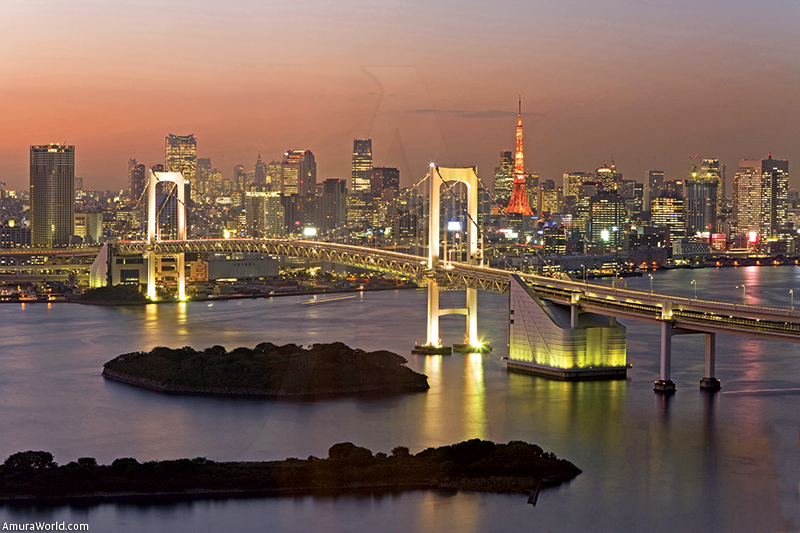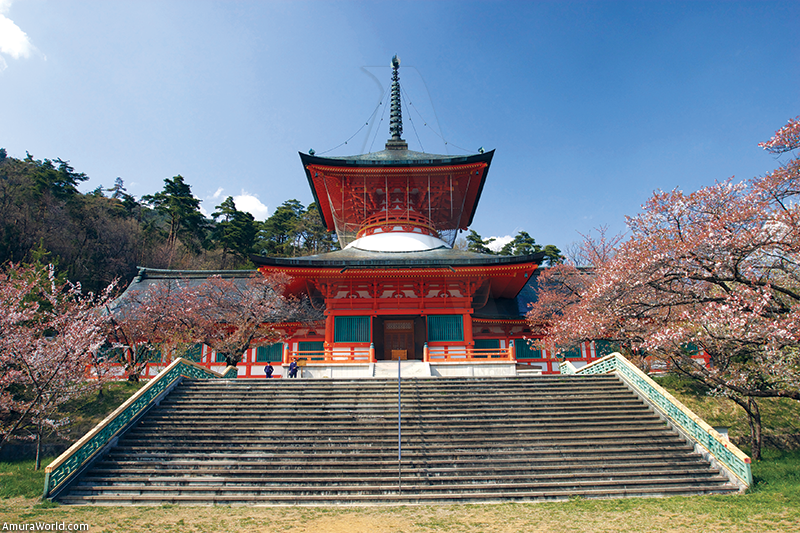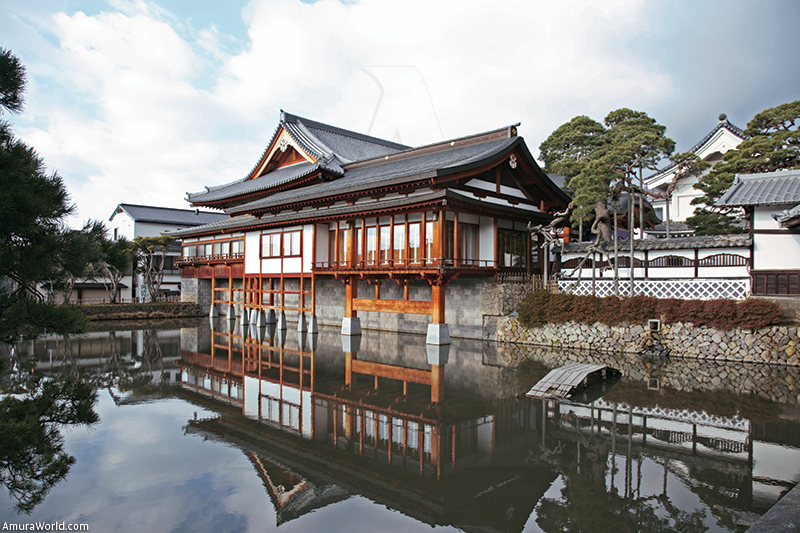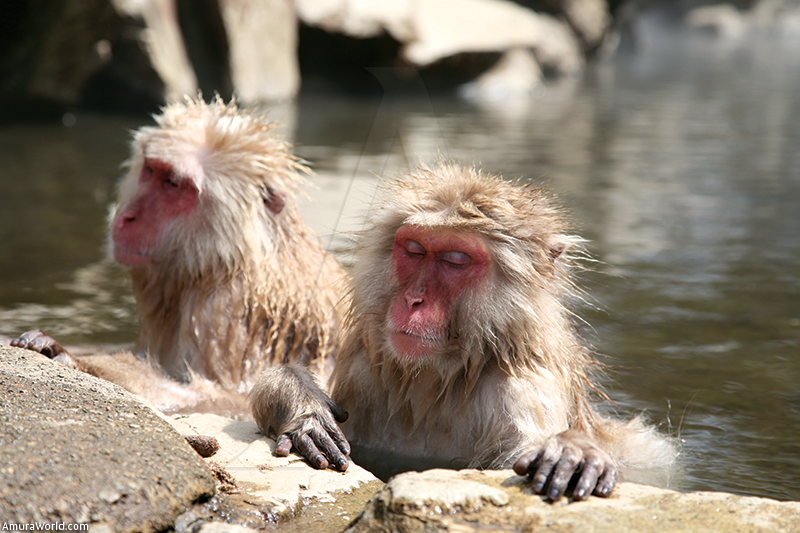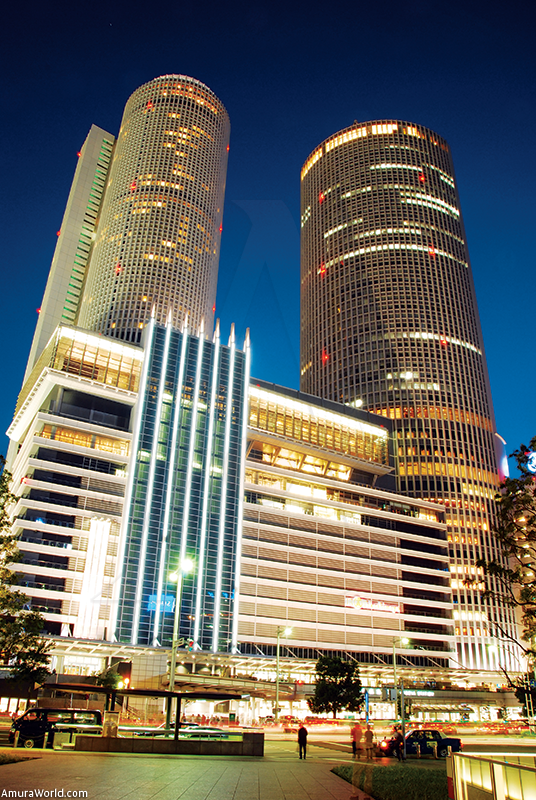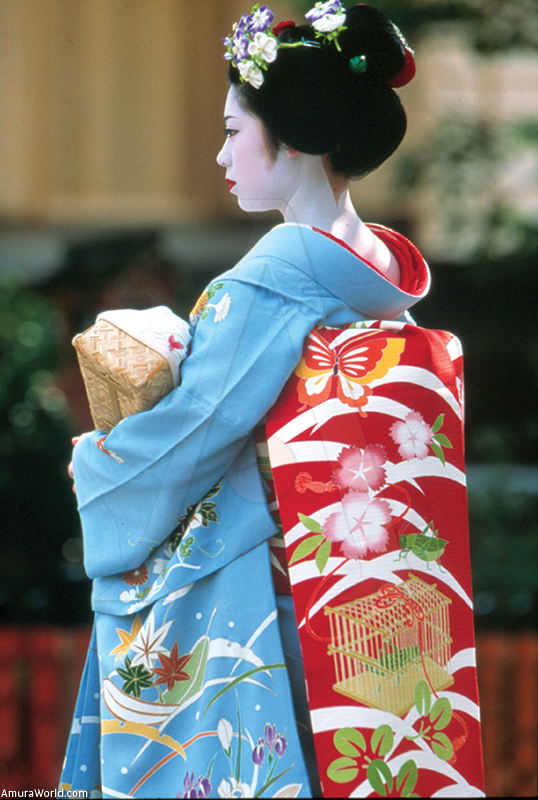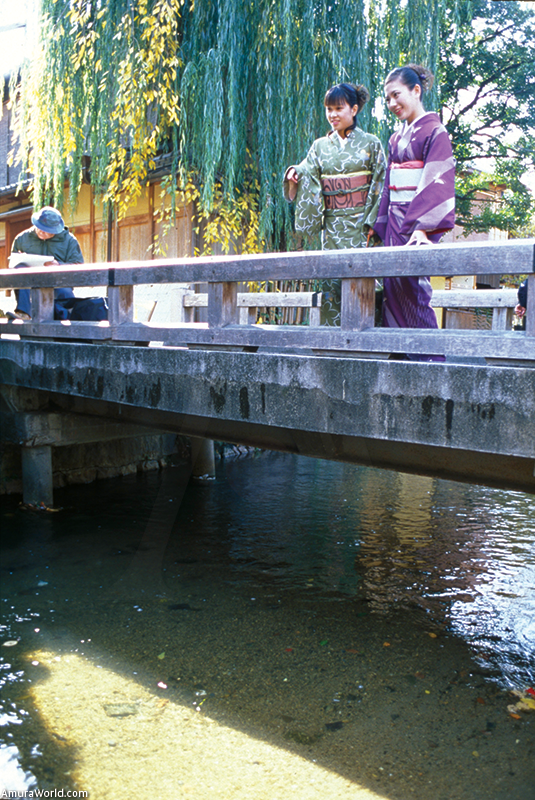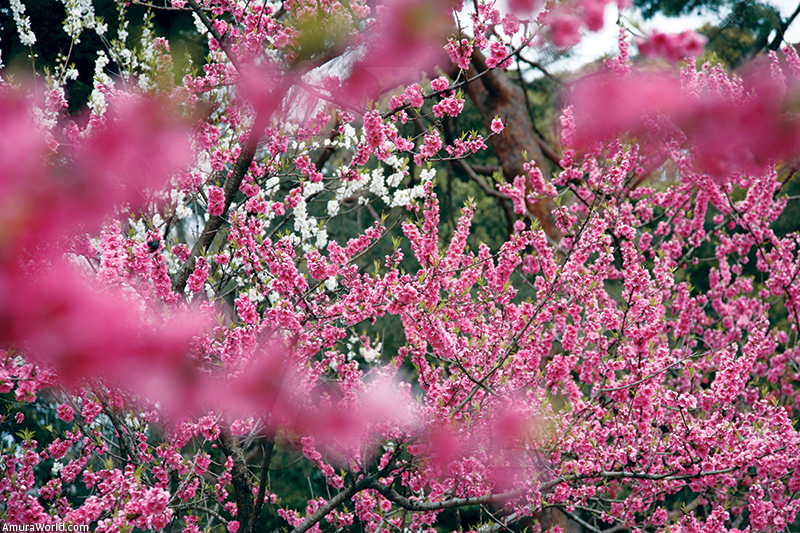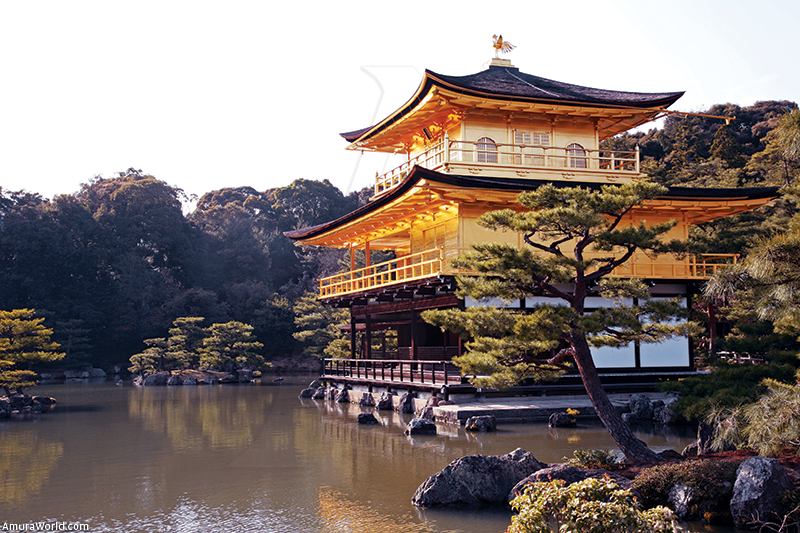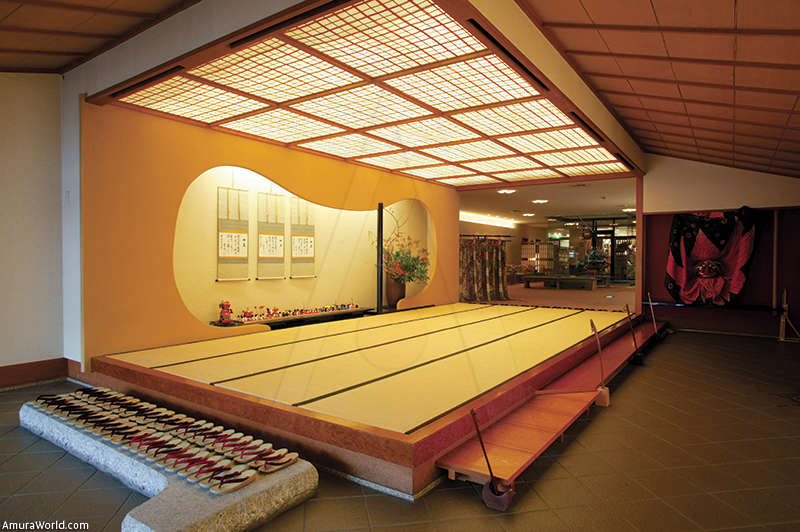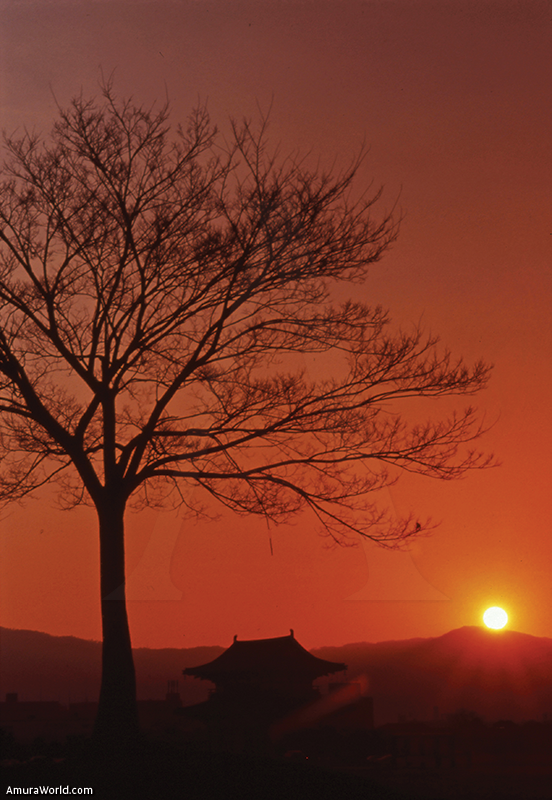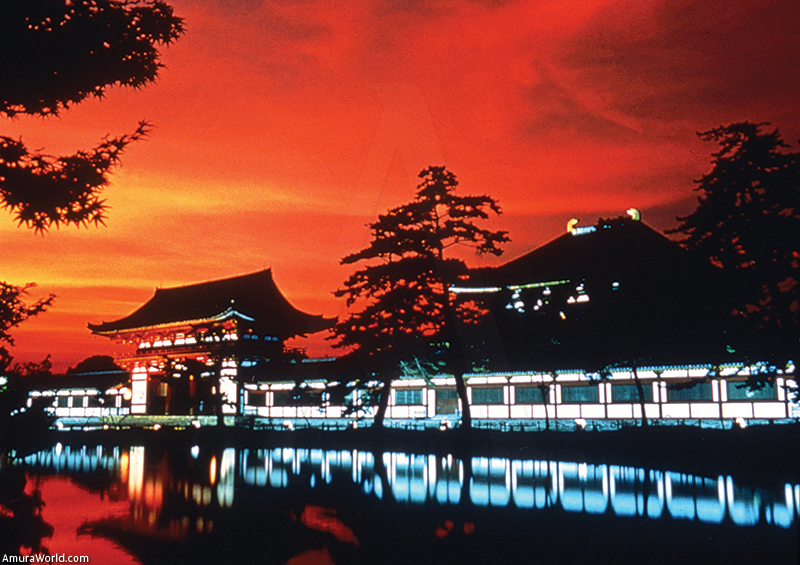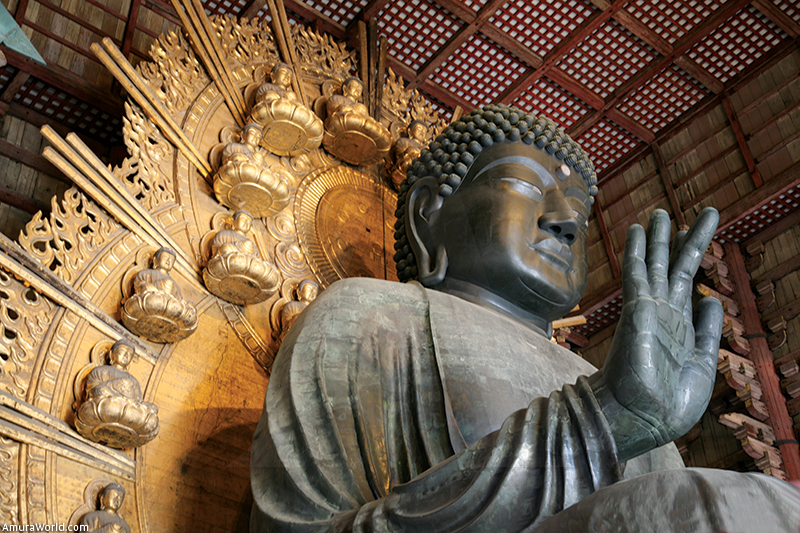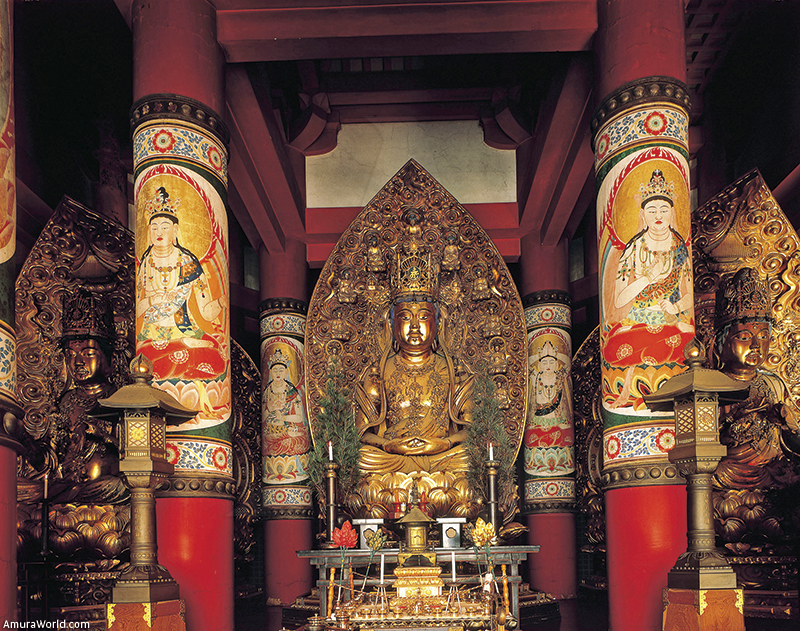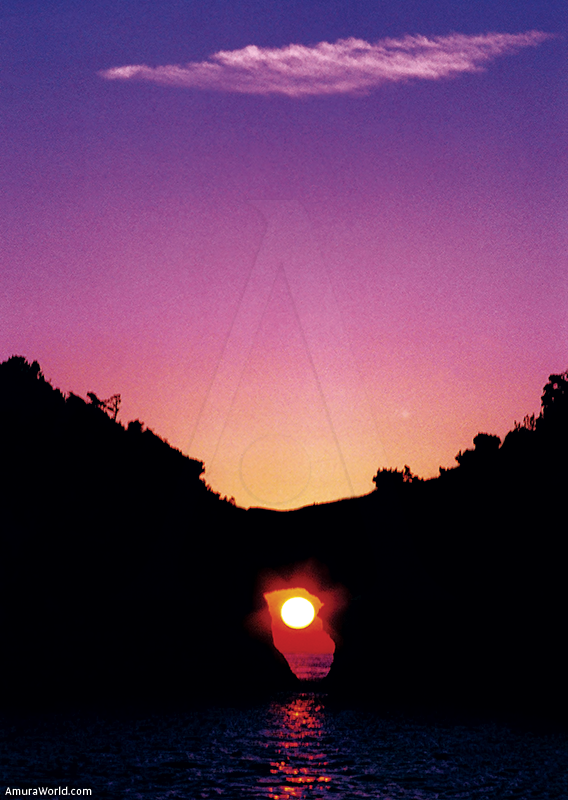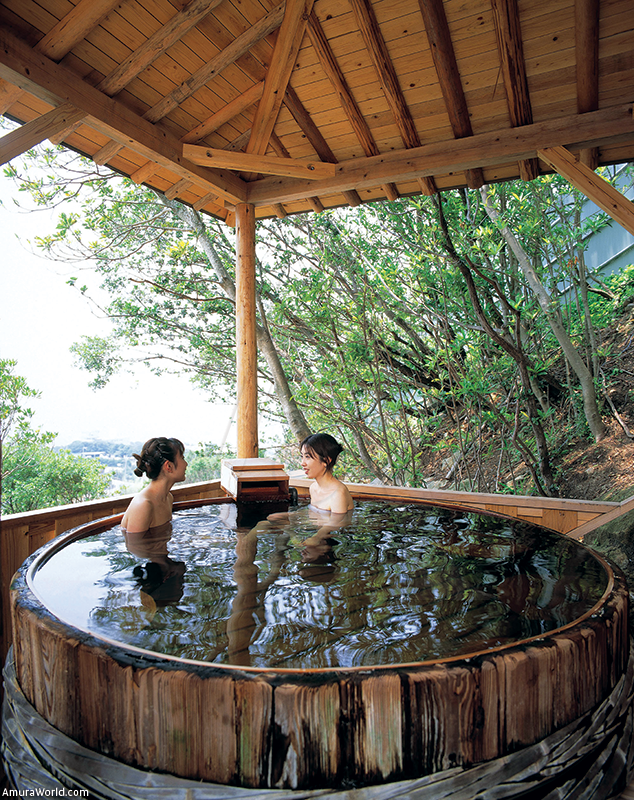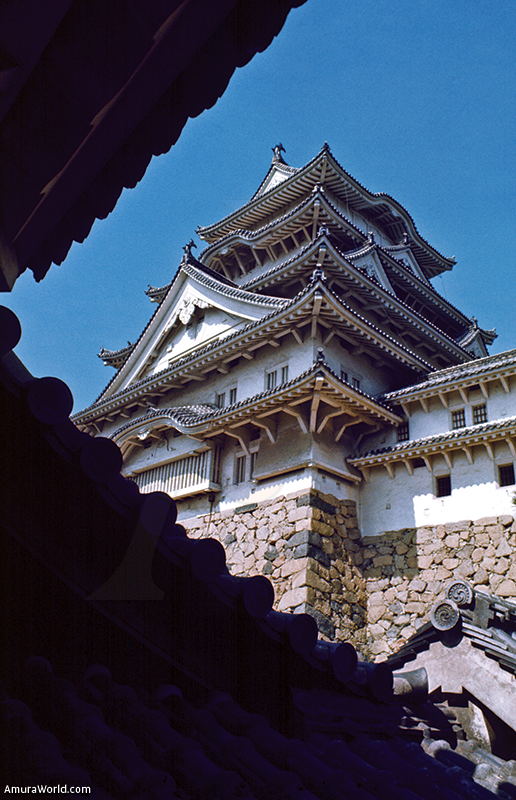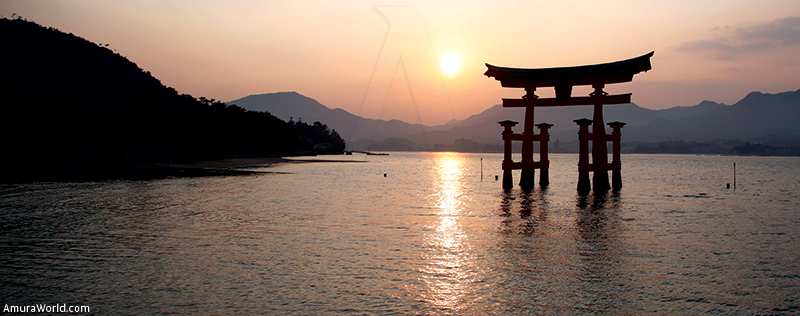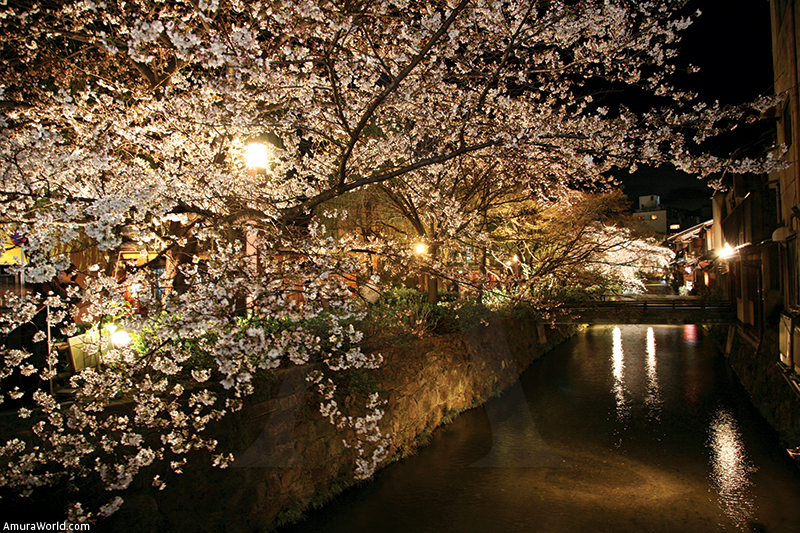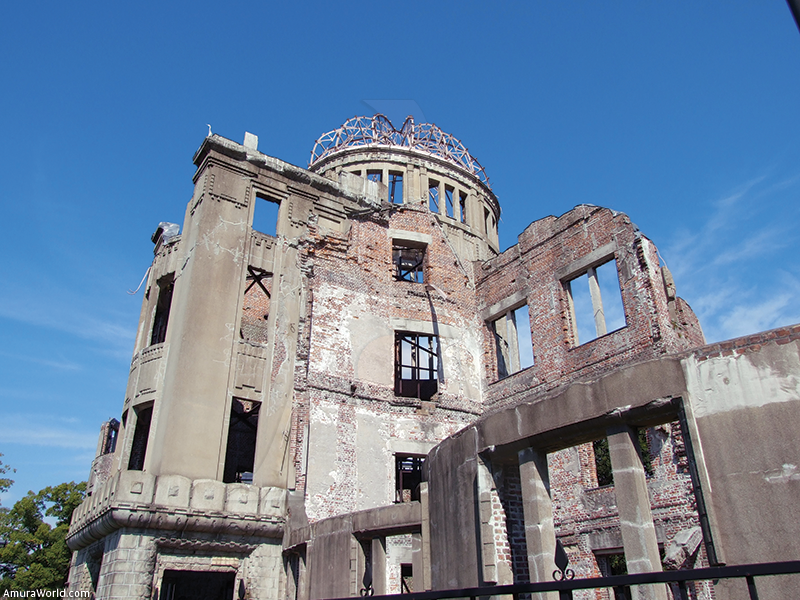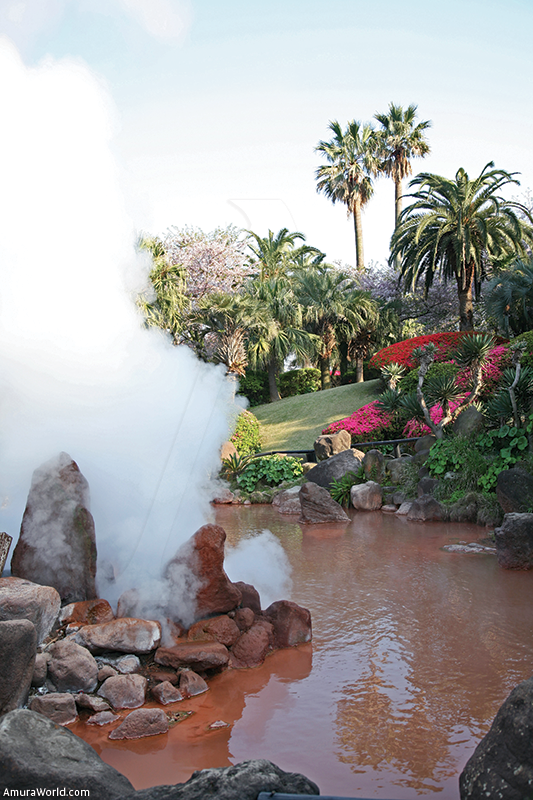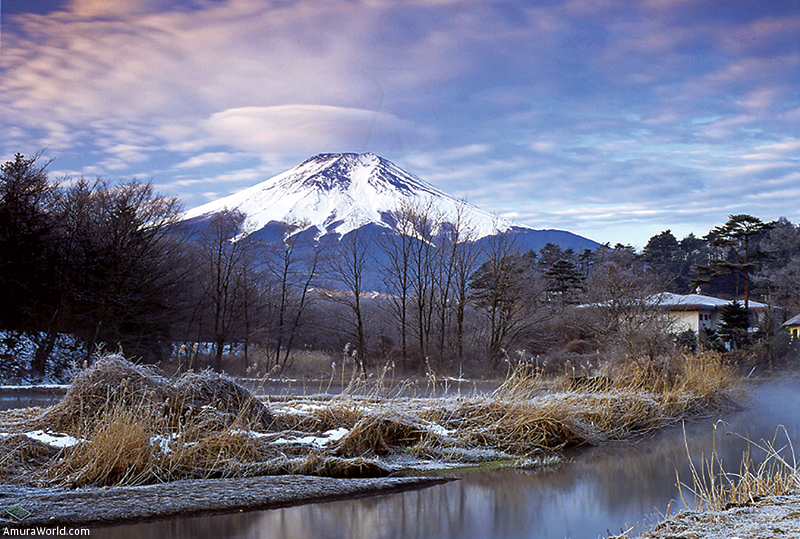Japan, the Route of the Rising Sun
When I arrived to Tokyo, an air of a city in movement was perceived like it the buildings themselves would move animated by the crowd that would swamp the streets, the shops and the trains.
Everything would amaze, the impressive view from the Mandarin Oriental, found at the 38th floor of the wing tower; the melons at the Mitsukoshi store (at 100 dollars a piece); the bakeries; the restaurants; the windows displays fit for an art gallery, the people that would sleep on the trains and on the subway.
At night, the city would shine like a planetary jewel. The neon would dance to unbalance the steps: the immense casinos would rumble with the noise of the machines and would drown with thick cigar smoke; and however, the streets were impeccable, clean, without a paper or a cigarette butt. The people wonderfully polite, educated and cheerful.
Avant- Garde Tokyo
Tokyo had me at first site. It’s a city that wins at being known, visiting its museums, its gardens, its modern buildings with a design that defies the past; its coffees, its libraries.
At night I would discover the bars, restaurants and nightclubs. During the day the people would go shopping from one side to the other or in their jobs. The fish market would wake the city with its commotion offering the strangest “things”.
Tokyo is intriguing within its own world of towers found I different modern neighborhoods and greatly filled with life, which emerge from the residential areas or the store avenues and offices.
The ancient temples preserve their traditions and the women attend with their kimonos; from the great rooms the incense emanates.
The people would run their way, taking the time to meet with friends or to go shopping and have fun, or at the casinos defying the establishes and belie-
ving in a good fortune that never comes. Up to very late the city was sleepless and bewitching.
The women with very modern clothes, almost always with weird clothing combinations, the men with dark gray suits, that looks like the office uniform.
The city fascinated me, it bewitched me, like it would cover me to lift me up and stroll me high above their towers and subway tunnels, of dinners and bars, of luxury in popular areas.
It is an exceptional world of the troubled neighborhoods of Sinjuku, Ueno, Shibuya (very popular in the young ones for fun and many night centers and passing hotels) Marunouchi and their gardens with the Four Seasons, Ginza, Nihonbashi where the Stock Market is found; I visited the Imperial Palace gardens, I went shopping to Nakamise and ended my stay in Tokyo agitated but seduces by the great capital.
Nagano, in the Mountains
With the Bullet Train (the Shingen) in two hours we arrive to Nagano in the mountains, home to the 1998 Winter Olympics.
I discovered its royal Zenko-Ji temple that dates from the VII century, one of the most ancient in Japan, where a dark hall leads to a door you have to knock for good luck, and above all, I’ve always wanted to know those monkeys that are relaxed in a thermal water pool in the middle of a beautiful snowy forest. I saw them and admired them.
They are intriguing with their skinny body by their wet hair and spongy face, soaking in the water.
Outside of the water, the snow would cover the hillsides and the waterfall had frozen.
Nagoya, Trembling City
The Shingen took us this time to Nagoya, a modern trembling city where the people would walking through the streets would make the futuristic style buildings vibrate. Nevertheless, it is a super clean and traditional city that seduces because of its futuristic style. I visited the Inuyama Palace that dominates the river, one of its most ancient and untouched in the country. The town is famous for its carefully carved wooden puppets and traditional ancient suits.
Modern Kyoto
When I reached the city, I got scared for seeing so much traffic, the modernity of the buildings, and the commotion of the garden’s capital.
I stayed at a Ryokan, the traditional hotel where the mattresses are place on the ground at night and there’s a table to drink tea sitting down on the floor. Even though this is very rough, you can get a good night sleep Japanese style, with a good backrest.
The garden was gorgeous, with its pond habituated by huge Koi carps, where the stone lamps light the scenery filled with Japanese romanticism.
The owner was a delight and taught me the rules of the Ryokan like taking off the shoes before going in, using the slippers, greeting other guests of the Ryokan discretely and using the Onsen or public bathroom.
This was a great discovery, where one is soaked in the thermal water pools after taking a shower, always sitting in a small bench, never standing up.
It was a powerful moment of relaxation, my mind left me in meditation, and the body would submerge in warm water to relax all the stress. The people, always men and women separated, would not chat; they would leave their mind to wonder the roads of a parallel Buddhism or a nirvana created for them.
I spent six days walking through the temples, gardens and Kyoto palaces; the alleys with surprises, the exquisite restaurants, the streets of the tea houses and watching the geishas walking through the alleys.
I walked under the cherry blossoms aside the canals and rivers, until stuffing my mind with images full of poetry and my steps took me to the most charming places of the city, besides the most modern skyscraper neighborhoods that defy acrobatics.
Palaces and Fortresses
I discovered the Royal Palace with its Zen gardens, where the stone lives at the rhythm of the gardener’s work who combs it and the ponds would come alive with the carps that would stare at the elegant richly decorated and at the same time sober buildings.
Just like the Fortress Nijojomae Palace with its wall surrounded by water and its rooms decorated of Japanese liking paintings that I like, I was fascinated.
The temples would offer each one its charm at their own style, very different one from the other: the Golden Temple Kinkaku-Ji (with its wonderful pavilion in the middle of a dream lake) Shôko-in with its gardens, Yentsû-Ji, Higashi Hongan-Ji, Honkoku-Ji, with its outstanding view, Nishi Otani Betsuin, Yamashiro Kokubun-Ji, Nishikejo Hieijocho, Ushitoracho, etcetera.
The Guion neighborhood would take us to the past and at the foot of the hill I walked aside the river that runs under the cherry trees.
By the Shugakein Kitafukecho Temple and in which the petals would fall reaching the Shugakuin Ishikakecho Temple and its beautiful neighbor, where my Ryokan was found.
I also discovered one of the oldest cherry trees of the country, which petals would fly with the air, and the Higashiyama temples, which take in the visitors that stroll through the alleys in the area.
I was fascinated by Kyoto, a man made city, with its channels where the cherry trees are reflected, its intense and authentic social life, its exquisite restaurants, its nice people, very different from the ones from Tokyo, with a provincial air and the modern buildings that are reflected in the past.
Nara, Sacred Place
At a short distance in the Kyoto train, I reached Nara, one of the most sacred places in Japan with its Todaiji temple found in the middle of the forest where the deer stroll around with calm and tranquility.
The temple has one of the most beautiful budas and that everyone comes to worship called Daibutsu Den and the figures that surround it are gigantic and impressive. The town is charming, vibrant around its ponds, animated by the people that live at a sacred town pace.
Koya San, Inner Peace
After taking the train, another smaller that looked like a toy, finally I reached the cable railway to arrive at Koya San, a town found at the top of an 800 meter mountain, without a hotel, so I had to stay at a monastery.
It’s the sacred place of Shingon Buddhism, which arrived to Japan with the Bonze Kûkai, who after teaching retired in a monastery in the middle of a lavish big pines forest.
After meditating for more than 30 years, in which his followers would check if he was breathing, one day he stopped living and in they buried him in the forest making out of this a sacred place.
People started to build their tombs and now the forest impresses because of its stillness, its mysticism, its moistness that allows the musk to grow over the mortuaries monuments and the Buda figures.
The temple is filled with glowing lanterns and I would cross that fantasy scenery like an angel goes through the hallways of heaven.
In the monastery I had to follow the life of the monks, eat with them in the ground, attend the praying at night and at dawn it was a very tranquil experience, healthy which filled my soul. Visiting the other temples and monasteries.
Shirahama, Cliffs
To discover the oriental coast of the Wakayama region I took a risk (on train) up to reach the famous Shirahama cliffs that shine at sunset.
It is a very popular beach during the summer and where they have made with beach sand brought from Australia’s coral reef.
The thermal waters emerge from the earth and the famous Onsen to heal and relax, the food is exquisite and it was a moment to enjoy some free time and wellbeing.
Himeji, the city of the future
Always with the train with a few vertiginous changes in Nagoya, I reached the city of the future, of the world upside down and where the buildings compete in beauty or ugliness, to the city of Himeji, a modern city that holds one of the most ancient and biggest castles better preserved in Japan.
I will never forget that sense of discovering it at night on top of the hill with that cherry blossom garden at its foot, people strolling or picnicking as if it were the ever lasting spring, celebrating the beauty of those trees that offered its best outfit to the world.
The next day, it was a complete event to see them again in the light of day, dresses in white flowers, the castle looked proud above its hill, with some stone buildings at its foot, a few elegant temples, some bushy gardens where the Koi carpets would animate the water and the pavilions would reflect in the still waters.
I fell in love of Himeji and its reflections within the covered white flowers branches with the happiness of the people enjoying the show without worrying about time.
Miyajima, the Enchanted Island
The bullet train took me to Hiroshima and the suburban train up to the pier where I took the ferry to cross over and arrive at the Miyajima Island, Japan’s enchanted island.
Immediately I went to see the orange door that is reflected in the ocean when the tide is high, one of the most famous views in the country, a planet’s treasure.
I stayed until the light was gone through the shiny door and placed myself at the elegant Ryokan Lwaso next to the river that runs from the mountain, with its elegant rooms and delicate food.
The town is a real garden of fairytales, with its animated streets by the souvenir shops, the maple pies, the restaurants, in the middle of gardens that decorate the temples, between the mountain and the sea.
The deer would come and go as if they were the only habitants and the temple in front of the door is situated over piles that live at the rhythm of the tides. It’s a life as sweet as it pies, part of the landscape where I felt the relaxation invade my veins while I meditated.
The cable railway left me at the top to admire the view and I spent the time discovering the ancient wooden houses, the door and the daylight that played with the tide. Miyajima seduced me, as a lover seduces its new conquest and I enjoyed some days of quiet.
Hiroshima, Reborn from the Ashes
Ferry and streetcar took me to the center of Hiroshima, a new city of beautiful avenues and modern buildings, that has been reborn from its ashes after the atomic bomb, a clean city with big avenues and the building that survived the atomic bomb marks today the memorial. It is impressive, it defies the bad aftertaste that marked man’s stupidity and makes you wonder how men could have causes such a huge and impressive disaster.
Beppu, Over a Volcano
The bus took me to a southern port, the Fukuoka Island, after leaving Beppu, the city that lives over a volcano and constantly releases the water vapors that boil underneath its buildings.
There are vapor areas all around the city, exit sulfur zones, and above all the Onsen that emerge from all over the city.
They are a delight, a prize given by the satanic gods to invite to soak the body in its conquering thermal waters.
It was an exquisiteness, with its ponds that come out of the gardens filled with flowers, which wrapped me around a sort of paradise where the body relaxes and lets the mind wonder. Also you can visit the Usuki grouts with the carved Budas in its walls, one of the most ancient in Japan.
Tsuwano
The bullet train and the country train took me to Tsuwano, the most surprising and delightful town in the country.
Its alleys are embellished with canals that run water from the river where they show off the most beautiful Koi carps I’ve ever seen on my journey. The houses are of wood, originated from other periods and I rented a bicycle to run through the town and to reach to the temple that dominates in the middle of the pine forest.
Looking around the countryside I could see how people would live comfortable in their humble homes, I would be friend them, eat in the restaurant’s where the owners and I could not communicate because of the language but we would laugh a lot. ¡What a beautiful and healthy place, good for the soul and filled with beauty for the eyes!
Gotemba, at the foot of Mount Fuji
Finally I reached to Gotemba at the foot of Mount Fuji and stayed at a strange hotel at a shopp-
ing center, restaurants, theater and above all a strange Onsen or Spa which pool was found the garden, some barrels whose waters held lavender and tea lime scents. It was a delight.
They say that to see the Fuji you have to get up early and be very lucky but that only a few people see it. Suddenly at dawn something awoke me, a true impulse of looking out the window and I saw it, there it was, arrogant and elegant, friendly and distant.
Its peak would come out of the clouds, its feet would bathe in the moistness of the dawn and the light would shine on its snowy top until the sun painted it pink.
It was majestic and I’ll always have that image which fills my heart recorded forever. After a while, the cloud went up and the snowy top disappeared forever out of my admiration. But it was one of the most intense moments in Japan.
I got back to Tokyo and I still stayed two days to enjoy its temulenta life, there wasn’t enough time to see the north, which swore to be meet on another journey. I was fascinated by Japan, the kindness of its people, the cleanness of its streets where I couldn’t find a paper or a cigarette butt.
I would wonder in the memories, told my soul the softness of my memories and would face the wisdom of Buddhism that would lead me to meditate. I was happy, conquered and ready to tell how much I enjoyed Japan to whoever wanted to listen.
Text: Patrick Monney ± Photo: Getty, Images / Patrick Monney / ©JNTO


